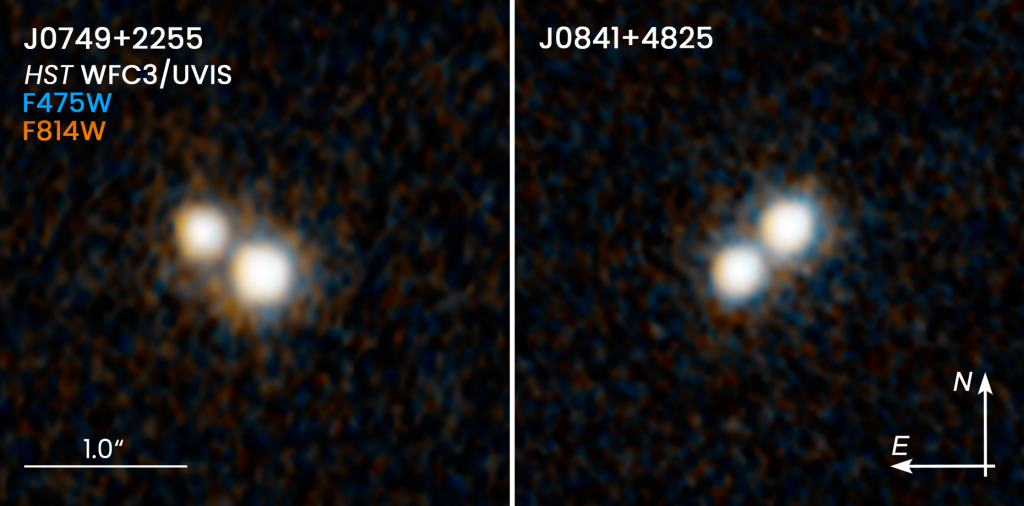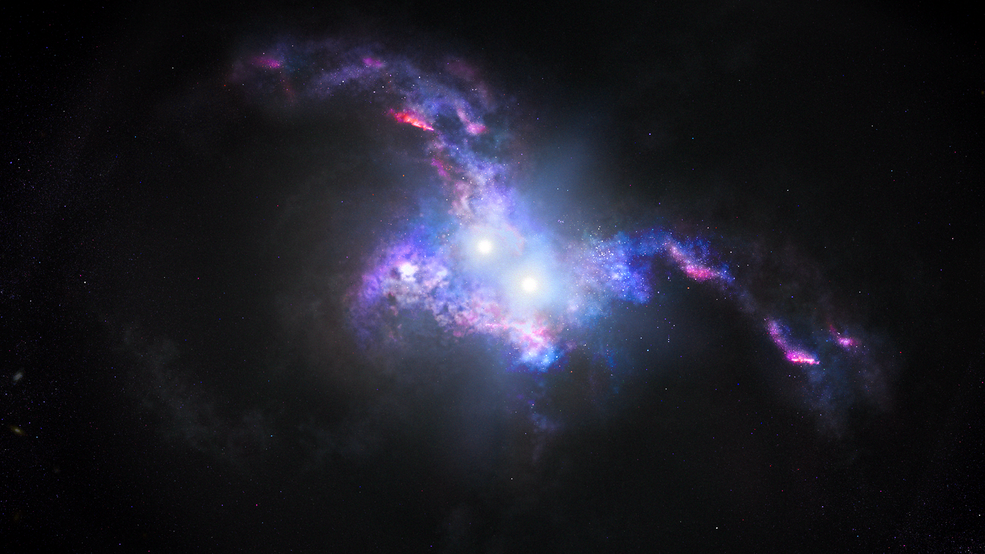
We have long known that galaxies periodically merge and that since galaxies generally have supermassive black holes in their centers, we expect that merging galaxies should have pairs of central supermassive black holes that are orbiting one another on their way to merging. What we haven’t been able to generally find are those binary black holes. And we still haven’t really found an advanced merger with two clearly distinct supermassive black holes. What has been found instead is a pair of merging systems with a pair of quasars in the heart of each merger. This discovery was made using the Hubble and Gaia space telescopes and the Gemini North telescope in Hawaii.
These systems nicely fit with the story we’d been telling about what should be happening; galaxies come together, they get somewhat disrupted in the process, and dust and gas fall into the central supermassive black holes, lighting everything up as accretion disks form and shine as quasars. With these systems, we see double quasars with the supermassive black holes separated by less than 10,000 light-years.
This work appears in the journal Nature.
These systems were spotted at a distance of ten billion-ish light-years away, and their light comes to us from a time in our universe’s history when galaxy mergers were much more common. According to study co-author Nadine Zakamska: This truly is the first sample of dual quasars at the peak epoch of galaxy formation that we can use to probe ideas about how supermassive black holes come together to eventually form a binary.

It is unknown how long exactly that it takes for supermassive black holes to merge, but in terms of the age of the universe, this is a fast event, and it takes a bit of luck to be able to find objects in the act. According to lead author Yue Shen: We estimate that in the distant Universe, for every one thousand quasars, there is one double quasar. So finding these double quasars is like finding a needle in a haystack.
This work is ongoing, and we look forward to seeing what additional mergers they may find. Since they are looking at things happening in the extremely distant universe, we don’t actually have any particularly pretty pictures of the actual mergers that we can show you. What we do have is a deeply amusing artist’s illustration that captures the nature of what’s going on while making the two galaxies look like a Jim Hensen creation. I kind of adore this image, and I am fairly certain this is far cuter and more symmetric than any train wreck that may actually be happening out there.
More Information
NOIRLab press release
NASA press release
“A hidden population of high-redshift double quasars unveiled by astrometry,” Yue Shen et al., 2021 April 1, Nature Astronomy




 Join the Crew!
Join the Crew!
 Escape Velocity Space News
Escape Velocity Space News
0 Comments